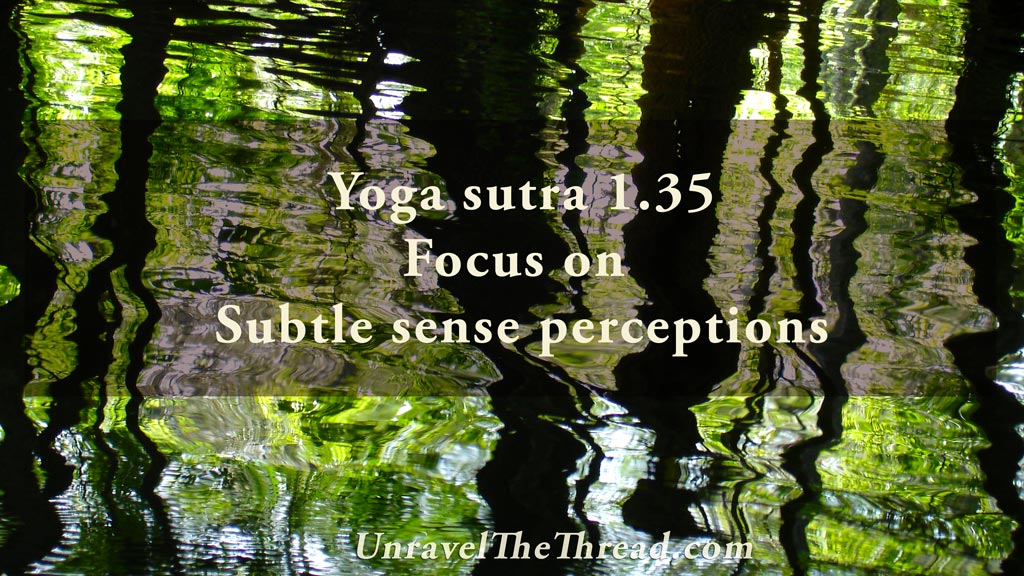
1.33 Friendliness, Compassion, Inspiration & Equanimity
November 8, 2019
1.35 Focus on subtle sense perceptions
November 23, 2019
1.33 Friendliness, Compassion, Inspiration & Equanimity
November 8, 2019
1.35 Focus on subtle sense perceptions
November 23, 20191.34 By exhalations and breath retentions


After suggesting focused attention (1.32) and moderation (1.33), Patañjali offers a list of possible focal points. The first one is attending to exhalations and breath retentions. Remember that tuning into your breath is a direct portal into presence, a sure way to be in the present moment. This sutra suggests the path of mastering vital energy (pranayama), inviting your attention inwards and establishing an intimate connection to your breathing processes. It is important to underscore that pranayama is the practice of making the breath smooth, steady and effortless. Whenever you are exploring your breath make sure that you NEVER FORCE your breath. This is very important. Abrupt breathing, feeling nauseous, lightheaded, dizzy, headaches, gasping or getting agitated are signs that you are forcing your breath. Keeping this in mind, in a comfortable position, notice what happens to your mind and internal environment when you immerse in the rhythm of your natural breath. As you observe, remember to focus on feeling without adding comments or opinions. This can be enough. However, you may also try to increase the length of your inhalations and exhalations very slowly and softly, as if you had the whole day for each single in-breath and out-breath. Try this for as long as it is comfortable, noticing what happens. Then return to your natural breath and observe once again how your body breathes on its own, as it does around 20,000 times each day, without your conscious supervision. Are there differences between the qualities of your breath when you regulate it and when your body breathes naturally? As you connect to your breathing process, feel your breath, noticing if it is hurried or unhurried, smooth or choppy, free or restricted.
This verse talks specifically about exhalations. Chanting OM (1.27 & 1.28), making the sound smooth, fluid and long is one specific way of focusing on your exhalations. You may also explore your exhalations in other ways. In a restful and tension free posture, you can try making your exhalations longer, softer and effortless. What do you notice? How do sensations change? Does this change your internal climate and mood? It is important to acknowledge and underscore that in pranayama practices, breath retentions are traditionally considered advanced techniques requiring the supervision of a knowledgeable and experienced teacher. Another simple way to start is by noticing what happens at the intersections between each in-breath and out-breath. What do you discover? Can breathing be a useful focal point to release some of the usual distractors?
As usual, one more way of exploring the meaning of this sutra is by chanting it.
You can choose to chant it in its traditional form with some the words coming together:
1.34 pracchardanavidhāraṇābhyāṃ vā prāṇasya
प्रच्छर्दनविधारणाभ्यां वा प्राणस्य ॥३४॥
Another option is to chant each word in the sutra individually:
- pracchardana
- vidhāraṇābhyāṃ
- vā
- prāṇasya
Unravel the thread is now available as a book!
If you find Simple-Yoga.org and Unravel the thread useful, consider supporting my labor with a donation, you may also donate using PayPal or Venmo. Thank you!